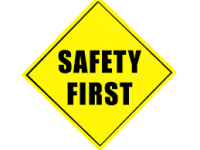Government workers: Avoid risks in the workplace (with related video)
Workplace deaths among government employees are worrisome. Government ranked number 4 among industries in number of worker fatalities, according to U.S. Bureau of Labor Statistics tabulations for 2014 (latest data available). Industries with the most fatalities include:
Construction, 899
Transportation and warehousing, 766
Agriculture, 584
Government, 435*
Professional and business services, 425
Manufacturing, 349
*The estimate covering government deaths includes fatalities to workers employed by governmental organizations regardless of industry.
Injuries also strike government employees on occasion. Postal workers and highway and utility construction crews are job/industry categories that are among leaders in prevalence of severe injuries, according to a recent Occupational Safety and Health Administration (OSHA) analysis.
The study, “Year One of OSHA’s Severe Injury Reporting Program: An Impact Evaluation,” listed those categories among the top 25 among industry groups reporting severe injuries. 
GPN reached out to Don Leonard, National Director, Public Sector, Risk Control, at Travelers. The firm is one of the nation’s largest property casualty companies. The firm covers multiple market segments across the personal, business, financial and international insurance groups. Don Leonard’s views are below.
GPN: What can local and state governments do to limit severe injuries in the workplace?
Don Leonard: Two important things they can do include creating a culture focused on safety and developing and communicating a safety plan that addresses key issues.
GPN: Can you please tell us about a culture of safety?
DL: A safety culture means more than focusing on preventing certain accidents; it’s a way of thinking that should be at the heart of an entity that considers employee safety and health from recruitment to retirement. For safety to be taken seriously, everyone must walk the talk, meaning all levels of employees should display core safety values and behaviors.
GPN: What are key ingredients in a good safety plan?
 DL: An effective safety plan starts with an understanding of the risks and exposures particular to that group. With that foundation, an organization can prioritize the risks that pose the greatest threat. For example, if workers are frequently getting injured while handling equipment or while driving to or from a job, then much of the focus should be there. With this focus, the organization can review work policies and procedures, buildings and equipment, employee work practices and behaviors, the environment and geographic location to determine if there are opportunities to prevent these key safety issues. A review of past circumstances relating to accidents can help identify root causes of issues that threaten employee safety the most.
DL: An effective safety plan starts with an understanding of the risks and exposures particular to that group. With that foundation, an organization can prioritize the risks that pose the greatest threat. For example, if workers are frequently getting injured while handling equipment or while driving to or from a job, then much of the focus should be there. With this focus, the organization can review work policies and procedures, buildings and equipment, employee work practices and behaviors, the environment and geographic location to determine if there are opportunities to prevent these key safety issues. A review of past circumstances relating to accidents can help identify root causes of issues that threaten employee safety the most.
GPN: What steps can governments take on the safety front?
DL: Solutions to safety risks can vary from implementing engineering controls to creating administrative policies and procedures. Properly developing a plan tailored to your workforce, then implementing and communicating that plan is the ideal. Effective implementation of the safety plan may require regular training, practice and drills, and continuous review of best practices and procedures. Taking these steps can help prevent accidents, keep employees safe and reinforce a lasting culture of safety in the workplace.
Power generators are sometimes used in government installations. The video offers some tips on safely operating generators.
_____________
To get connected and stay up-to-date with similar content from American City & County:
Like us on Facebook
Follow us on Twitter
Watch us on Youtube




















